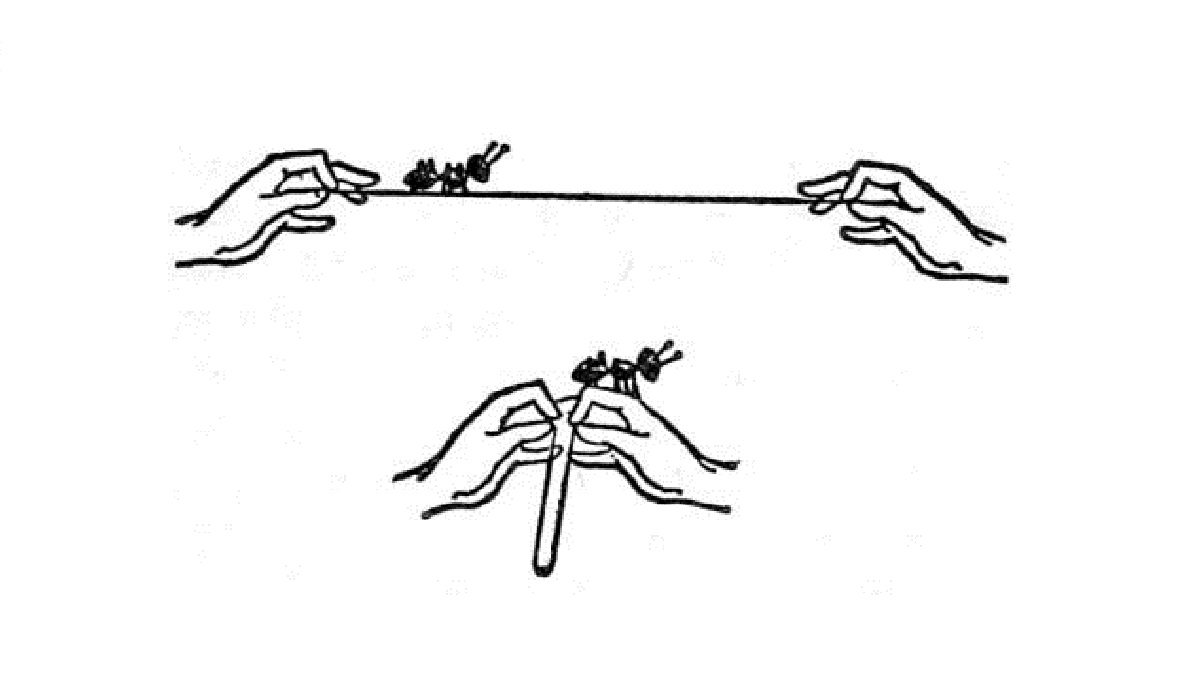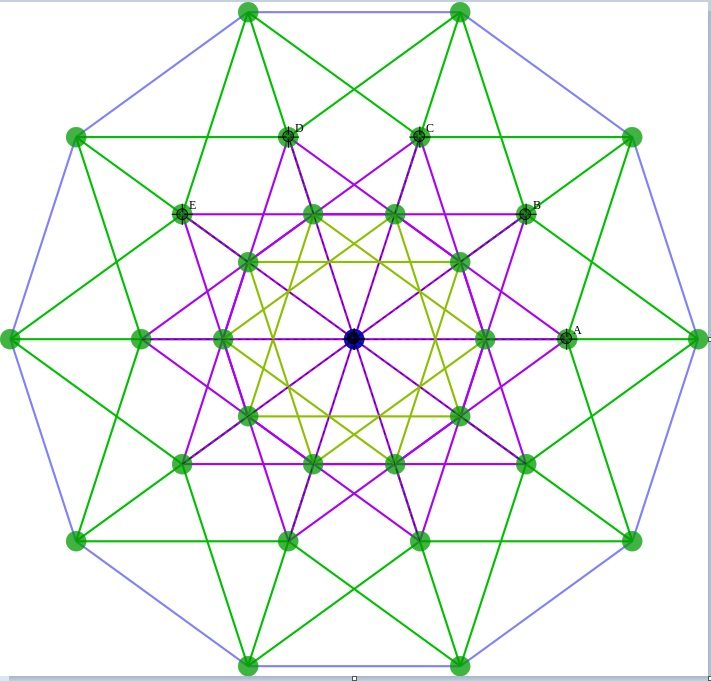
The other day, I announced that I would be counting down to the release of Disney’s newest theatrical adaptation of A Wrinkle in Time by discussing every possible aspect of the book on which it is based, being that it’s my favorite book and I sometimes think too much.
Because it’s essentially the title and therefore the concept the whole story depends upon, and today also happens to be renowned physicist Stephen Hawking’s 76th birthday, we’ll start by taking a close look at the question all true fans of A Wrinkle in Time have politely ignored since the first time they read it:
What the heck is a Tesseract, anyway?
That depends what you’re really asking.
Note: There WILL be SPOILERS for the 50-some-year-old book below, just in case you want to go in totally fresh. I can’t have a deep-dive discussion without looking at the whole book!
In reality, a Tesseract is simply a mathematical concept, but in the minds of science fiction writers, as GeekMom Ruth showed us in this great post a few years ago, it’s a concept with powerful possibilities.
The flap copy of A Wrinkle in Time says, “A tesseract (in case the reader doesn’t know) is a wrinkle in time. To tell more would rob the reader of the enjoyment of Miss L’Engle’s unusual book.” Which basically means the copywriter had no clue what a tesseract is, either.
Oh, sure, the Mrs Ws—and Charles Wallace, dang those superintelligent five-year-olds—explain it in the book. A tesseract, according to the Mrs Ws, is the fifth dimension. Not this one, the dimension you get if you square the fourth dimension, aka Time. Meg claims you can’t draw a tesseract like you can draw a three-dimensional cube, but that doesn’t stop math geeks of the world from trying. Come to think of it, Meg is a math geek, so she probably has tried. (I like how, according to the trailer, movie-Meg does already know all this theory, and is helping to explain it to Calvin. Her five-year-old brother doesn’t have to show her up!).
Anyway, nowadays there are animated gifs, too, which means you can draw it. See? Here is a tesseract:

Technically, this is a five-dimensional hypercube:

On How to Warp Space-Time
But let’s forget about drawing figures for a minute and look at what the fifth-dimensional Tesseract is supposed to do, instead: fold the fabric of space-time so you can eliminate distances entirely. Is there any scientific truth to this? For answers I turned to the simplified edition of birthday-boy Hawking’s landmark book on the subject, A Briefer History of Time.* Yes, Briefer. Because I am too lazy for my library doesn’t have the simply Brief version.
Now for the obligatory disclaimer: I am NOT a physicist. What I know on the subject of space-time I’ve pretty much learned from, well, reading this here copy of A Briefer History of Time. And, you know, science fiction. I am sure some of you are way ahead of me there. All I am is a creative type who likes stretching… um, wrinkling …the real science to IMAGINE how it could apply to the ideas set forth in A Wrinkle in Time. Don’t use me as a reference if you’re writing a paper for school, in other words.
So let’s set up the universe to begin with. Space and time are not only related, they’re interwoven: you can’t have long-distance space travel without it incorporating a bit of time-travel. Hawking writes (p. 108 of the copy I have), “Most [science fiction writers of space epics] don’t seem to have realized the fact that if you can travel faster than light, the theory of relativity implies that you can also travel back in time.” L’Engle, of course, is NOT one of those writers: she’s gone and put the link between space and time right there in the title of the book!
So space and time are all woven up together like the fabric of an old-lady-celestial-being’s skirt. So if, as the Mrs Ws explain, an ant starts walking across a stretched out bit of Mrs Who’s skirt, and Mrs Who suddenly FOLDS the skirt between the ant and her other hand, then the ant is there, already. “In other words, to put it into Euclid, or old-fashioned plane geometry”—oh Charles Wallace, always so precocious—”a straight line is not the shortest distance between two points” (p. 75 of my reference paperback of Wrinkle).
This is true. But mostly because the whole universe is curved to begin with. The “flat” surface of the earth is curved. Even space is, relatively, curved. Anytime someone THINKS they’re going in a straight line, it is in fact actually a curve! If one could take a shortcut by not crossing space in the typical curved manner, but just cutting straight through—REALLY straight, outside-the-confines-of-the-universe-as-we-know-it straight— THAT would be the way to go.
“It might be,” Hawking says on page 109 of his book, “that you could warp space-time so that there was a shortcut between A and B.” He proposes creating a wormhole to accomplish this—a path that cuts right through the curvature of space.
But I’m intrigued by the word choice: warping space-time. Warping implies fabric, and fabric implies wrinkling! The metaphor becomes even stronger when you bring string theory into it. According to string theory, “the basic objects [of the universe] are not point particles but things that have a length but no other dimension, like an infinitely thin piece of string” (p.125). If the universe is made of strings, I’M inclined to think of those strings as woven together into Mrs Who’s skirt!
String theory also fits with Mrs Whatsit’s claim that they do their traveling through the “fifth dimension.” Hawking outright states on page 129 that taking “a shortcut through the extra dimensions” that string theory insists exist, curved up in a way that we can’t perceive them, is “an ideal way of overcoming the normal restriction of general relativity that one cannot travel faster than light or backward in time.”
What’s extra cool is that the basics of string theory were not proposed until the late 1960s, and not put out properly as THIS string theory until 1984. Wrinkle was published in 1962 and written about ten years earlier. CHEW ON THAT.
But How Does a Tesseract Work?
One thing that’s never explained, in Wrinkle or by science, is how, exactly, one performs a tesseract (here using the term to mean “wrinkling space-time”). It’s one thing for Celestial Beings like the Mrs Ws to pull it off: they’re powerful enough to grab the fabric of the universe and twist it about however they like. But how does a human like Mr.-Dr. Murry accomplish it? Hawking keeps coming back to spaceships– even “time machines” must really be spaceships– but there’s not a single spaceship in this entire book.
I somehow always pictured Mr.-Dr. Murry’s government tessering experiments involving a sort of cubicle thing and, you know, radiation because this was the 50s-60s so there had to be some radiation involved somewhere. The first part, at least, does make sense, if a Tesseract is indeed a cube, um, cubed.** He used a Hyper-cubicle. In fact, the other biggest instance of a tesseract being used to warp space-time in pop culture is in the Marvel universe, where it also goes by the name of Cosmic Cube.
I have a head-canon. It’s a totally legal headcanon, too, because Disney owns the film rights to both properties. A Wrinkle In Time takes place in the Marvel Cinematic Universe.
All Meg knows about what her father was doing was that it was top secret and for some branch of the government, but nothing more specific. Isn’t it obvious? Mr.-Dr. Murry—Dr. Alex Murry—Meg’s dad—was working for S.H.I.E.L.D. S.H.I.E.L.D. called the renowned physicist in to study the weird hypercube Howard Stark brought them, and Dr. Murry figured out not only how to make the object work, but the principles of why it worked.
Anyway, Meg’s father had no physical Tesseract device, Cosmically Cubic or otherwise, on Camazotz, and yet was able to transport not only himself but also Meg and Calvin– blindly as he did– out of there. So he must have been studying the science behind the object so they would not have to depend on the object to do everything.
Perhaps Dr. Alex Murry and his colleagues had to train themselves first merely to view the fabric of space-time in a manipulative way, then to actually manipulate it. While under the influence of IT, Charles Wallace develops the ability to manipulate matter—pushing aside the molecules of a wall to access an elevator—through what likewise seems to be an almost purely mental process. All he had to do was give in to the power of IT to learn this skill, but it would take the average human a bit more work to start manipulating space-time. And even though he’s one of the only humans to have learned it at all, Dr. Murry still thinks “we know nothing…. We’re children playing with dynamite.” (p. 153)
Fact is, the exact details, the exact science, is not the point of the story. This is not a textbook to intergalactic travel. You CAN glaze over attempting to understand even the bit explained in the book, and the emotional arc of the story will carry you through regardless.****
But it’s fun to speculate, and fun to realize that, technically, this is a more scientifically accurate portrayal of long-distance space travel than the more common “warp drive” is, because it doesn’t ignore the part of time in the process. This recent interview with a couple of real scientists is terrific, because instead of brushing L’Engle off as merely “fantasy,” they acknowledge exactly how prescient—and inspirational—she really was. (Bonus, book nerds: my article may not go into A Wind in the Door, but the video does! Enjoy!)
And yet the book is considered “science fantasy,” not pure science fiction. I’ve got stuff to say about the spectrum of speculative fiction next week. Until then, as Madeleine L’Engle signed all her books: Tesser well!
*with Leonard Mlodinow. Bantam, 2005.
** Cubed? Help me, math geeks. If something is squared, and then the results are squared, does that mean the original was cubed? I’ve blocked out high school geometry.***
***But don’t help me too much. I don’t really need an in-depth explanation. I blocked out high school geometry on purpose.
****Have you ever heard of the 90-Second Newbery video project? You definitely have to check it out, homeschoolers/language-arts teachers/book nerds. This year’s deadline is Friday, so maybe you should just start planning for next year. Anyway, when author and founder James Kennedy started the project, he made a sample video of his—OUR—favorite Newbery Medalist, and I cracked up when they got to this part of the book: “See this string and this insect—” “Okay I get it.” Yeah, that’s basically how I felt at the age of 9, too.



Squaring a square would be taking the original to the FOURTH power, which is a step beyond cubing it.
I believe I was familiar with the term “warp” for transcending space and time before I knew about its use in weaving, but it’s not difficult to see the connection.
Yeah, that’s what I was suspecting. Wait, maybe THAT’S why the 5D hypercube can’t actually help people travel through space-time! Maybe you need to cube the cube, instead of squaring the cube and then squaring the result! And nobody can actually figure out how to do that! …and maybe I’m stretching this too far.